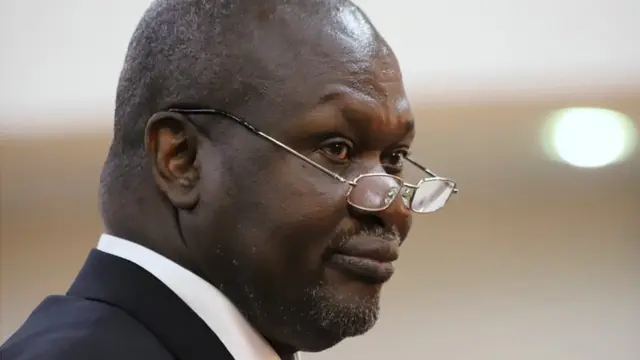After intermittent civil wars, there was some hope in 2018 when the SPLM/IO and the South Sudanese government, led by President Salva Kiir, signed the Revitalised Peace Agreement (R-ARCSS). The 2013 civil war was sparked by political squabbling between the two warring factions. However, this destructive conflict was driven by more than just unwarranted political rivalry—it also stems from deeper ethnic divisions.
This political competition has ethnic origins, rooted in unresolved tensions between the Dinka and Nuer communities. Relations between the two groups have long been strained due to incidents during the liberation struggle. Many modern-day liberation movements have witnessed grave human rights violations, including unjustified political assassinations of prominent figures. While power struggles and ideological differences often fuel such conflicts, leadership disputes within the movement have been a recurring issue.
For instance, the late Samuel Gai Tut, one of the founding fathers of Anya Nya 2, proposed that Akwot Atem lead the movement, with himself and others—including 1st Lieutenant Vencent Kuany Latjor, the late Akwot Atem, and 1st Lieutenant Gordon Koang—serving as deputies. However, the late Dr. John Garang insisted that Samuel Gai Tut take the lead, with himself as deputy.
This disagreement led to a bitter conflict between the two factions. The violence began in Itang and spread to Thiajak/Adura, near the South Sudanese-Ethiopian border. In March 1984, Samuel Gai Tut was assassinated in Thiajak, fracturing the movement into two factions: one led by Abdalla Chuol Deng (Anya Nya 2) and the other by Dr. John Garang (SPLM/A). Under Abdalla Chuol Deng’s leadership, Akwot Atem was later killed. Garang, meanwhile, ordered the executions of several notable Nuer members, including Kiir Tang.
In 1985, the Gajaak Nuer subgroup suffered ethnic cleansing under Garang’s command. Civilians were indiscriminately slaughtered, and entire villages were burned. These atrocities heightened tensions between the Gajaak communities and the SPLM/A along Ethiopia’s border.
Since then, the ethnic divide between the Nuer and Dinka has persisted. Before the SPLM/A split in 1991, tensions simmered for years. The 1991 Bor massacre claimed countless lives, predominantly Dinka Bor civilians, though some Nuer were also killed. The split, led by Dr. Lam Akol Ajawin and Dr. Riek Machar, quickly took on ethnic dimensions despite its original intent as a united opposition to Garang’s authoritarian rule. Both sides committed atrocities—Nuer members of the Torit faction were killed, as were Dinka officers in the Nasir faction.
In 1996, Dr. Riek Machar signed the Khartoum Agreement with the Sudanese government, seeking self-determination. He later rejoined the SPLM/A in the early 2000s, though Dinka hardliners remained distrustful. Since then, ethnic political rivalry has intensified, with both groups vying for control of the movement’s leadership and, later, political dominance in an independent South Sudan.
Looking back to the 1970s and 80s, Justice Abel Alier Kwai, a respected Dinka Bor leader, presided over the Southern Region’s High Executive Council. While ethnic tensions between the Nuer and Dinka elites were less pronounced than today, they still existed.
The unresolved historical grievances resurfaced violently in 2013. According to an African Union report, President Salva Kiir’s government orchestrated a campaign of ethnic cleansing against the Nuer, resulting in thousands of civilian deaths. The massacres continued in 2014, 2015, and 2016.
The 2018 Revitalised Peace Agreement offered a glimmer of hope, but its implementation has been deeply flawed. Dr. Riek Machar, who was under house arrest in South Africa from 2016 to 2018, was later confined in South Sudan under the guise of the peace deal. He remains restricted, unable to travel—even for medical treatment—effectively imprisoned without due process. Given these violations and the lack of political will to honor commitments, the agreement appears hollow.
If left unaddressed, the Dinka-Nuer rivalry risks fracturing South Sudan into regional blocs. Hardline Dinka elites like Paul Ngang, Choul Thon, and Bol Mel have exacerbated tensions. While other ethnic groups—such as the Equatorians and Fertit—also face oppression, the regime’s primary focus has been subduing the Nuer, who possess the military capacity to resist.
The Dinka ruling elite’s reliance on historical grievances to justify ongoing violence, including the March 2025 bombings of Nuer civilians, sets a dangerous precedent. Rather than repeating past mistakes, South Sudan must learn from other nations that have reconciled deep divisions through dialogue. Military suppression of the Nuer will fail; only a negotiated settlement can ensure lasting peace.
While some Dinka elites advocate for ethnic cleansing, others oppose it. Those who support violence underestimate the long-term consequences. President Kiir’s government may seem dominant now, but South Sudan’s unity hangs in the balance.
In conclusion, the South Sudanese people have no other option except to build on the current precarious peace accord. South Sudan has no interest in the conflict getting worse. When attempts at a possible reconciliation process fail, those who plant the seeds of division among the communities may not be there. The voice of the entire Dinka community may not always be represented by these ruling elites. For political reasons, some of these leaders sow discord in the communities. When it comes to the conflict between the Dinka and Nuer, this is mostly done to maintain control over power, resources and mobilise the Dinka community.
The author, Dr. Gak Deng Woul, is a South Sudanese researcher and political activist based in Australia. He holds a Master’s degree in International Relations from Deakin University and a PhD in refugee migration and settlement policies from Monash University.
The views expressed in ‘opinion’ articles published by Radio Tamazuj are solely those of the writer. The veracity of any claims made is the responsibility of the author, not Radio Tamazuj.




